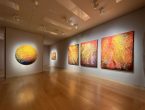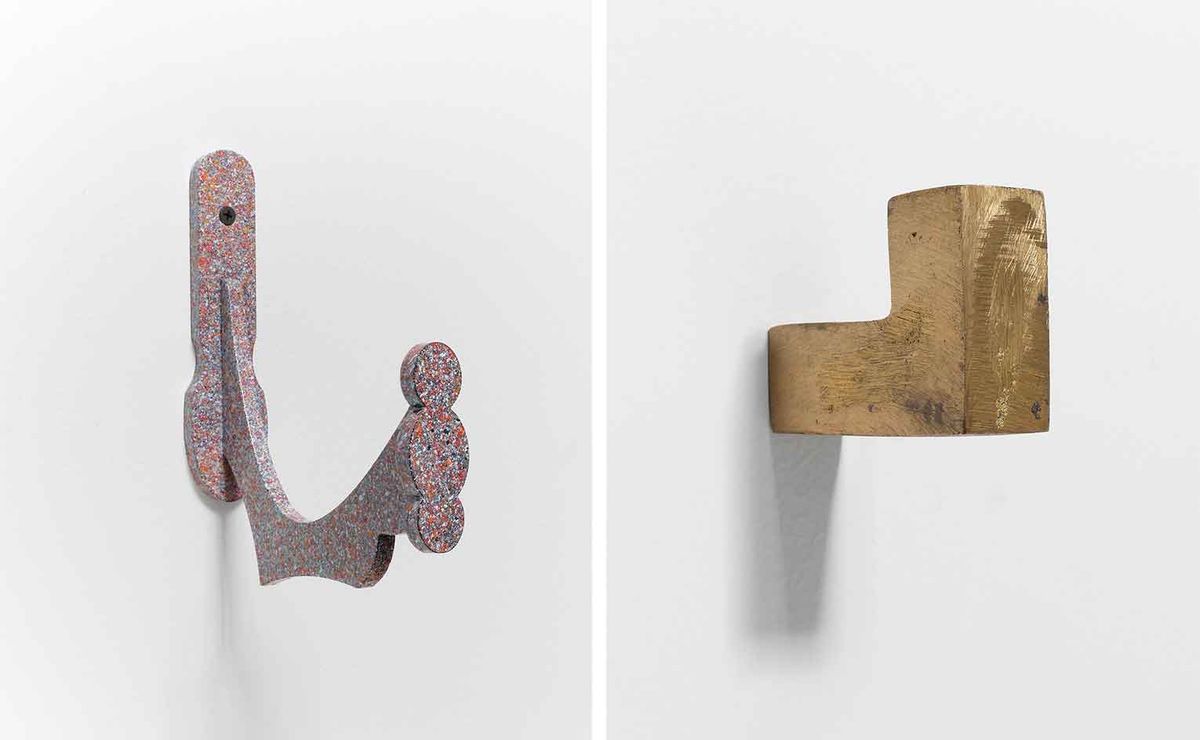Stones and Elephants
2019 - Installation (Installation)
12:59 minutes
Chia-Wei Hsu
Stones and Elephants by Chia-Wei Hsu derives from the Malay literary classic The Hikayat Abdullah . The author Abdullah bin Abdul Kadir, who once served as the secretary of Major General William Farquhar, chronicled his life in Malaysia and published his writings in 1849. Hsu’s video installation excerpts two chap- ters from this classic. The artist invited a Malay shaman to read these two stories as a voiceover and to pray for a peaceful filming trip. The chapter “Melaka Fort” depicts how the British destroyed the strong fortress to weaken Malacca and return control of the region to the Dutch East India Company, while the other describes the locals, William Farquhar, and his interest in ecology. The perspective offered by the drone creates a unique relationship between the human and the non-human. The artist can only use technology and the internet as a vessel for memories. As stated in the narration, “all these have passed, showing that everything is so fragile.” Algorithms ensure that every keyword search will show different results, presenting elements of truth among the uncertainty of this work. Through this, Hsu attempts to retrace historical scenes that have been lost to time.
Embarking from myriad audio-visual narratives, Chia-Wei Hsu pursues imaginative interrogations of cultural contact and colonization in Asia, oftentimes amalgamating his primary narratives with non-human actors including technologies, animals, gods, environments, traditions, and material objects. Bringing these diverse subjects together results in a bumpy ontological bleed between them, forming the topography of a historical geography without a straightforward objective position. By reinterrogating what histories and relations coexist within a given locale, Hsu’s work manifests new imaginative potentialities for their revitalization, an uncertain, profound terrain throughout his films and installations. While his work has consistently probed regulatory systems including religion, science, architecture, and military action, Hsu’s work has increasingly explored digital ontologies and the Internet of Things, in which previously luddite household objects have become connected to the internet. The digital, as a territorializing field produced by components largely manufactured in Asia, allows Hsu to attempt the detournement of western knowledge-bases to formulate new, imaginative archipelagos.
Colors:
Related works sharing similar palette

© » STEVE LAMBERT
Center for Artistic Activism's Unstoppable Voters Fellowship - Steve Lambert Center for Artistic Activism's Unstoppable Voters Fellowship - Steve Lambert Steve Lambert wrote a book!!! Art Works News Writing About Steve Contact Resume Now Newsletter Book Creative Commons BY-NC-SA August 2022 News , Studio Log Center for Artistic Activism I spent last week training the inaugural fellows for the Center for Artistic Activism’s Unstoppable Voters program ...

© » KADIST
Randa Maroufi
2019Randa Maroufi’s Bab Sebta , is named after a Spanish enclave in Morocco, Ceuta...

© » KADIST
Francis Alÿs
2004The Nightwatch , which is an ironic reference to the celebrated painting by Rembrandt, follows the course of a fox wandering among the celebrated collections of the National Portrait Gallery in London...

© » KADIST
Kristen Morgin
2008Jeep Comics is based on the second of only two issues published by RB Leffingwell and Company in 1944–45...

© » ART CENTRON
Top Art Auction Houses: A Comprehensive Look at Titans of the Art World - Artcentron Home » Top Art Auction Houses: A Comprehensive Look at Titans of the Art World ART AUCTION Feb 9, 2024 Ξ Leave a comment Top Art Auction Houses: A Comprehensive Look at Titans of the Art World posted by ARTCENTRON Christie’s is one of the top art auction houses in the world...

© » DAZED DIGITAL
Texas Hold ‘Em: Beyoncé drops two country-tinged singles | Dazed â¬…ï¸ Left Arrow *ï¸âƒ£ Asterisk â Star Option Sliders âœ‰ï¸ Mail Exit Music News The singer announces the second stage of her Renaissance trilogy, and releases a duo of new tracks 12 February 2024 Text Dazed Digital During the Superbowl last night, Beyoncé announced that her new album – Act II – will be released on March 29...

© » TWOCOATSOFPAINT
Louis Fratino’s happy equilibrium – Two Coats of Paint Louis Fratino, Red Nude (After Mafai), 2023, oil on canvas 65 x 94 inches Contributed by Margaret McCann / Louis Fratino’s paintings in “In bed and abroad” at Sikkema Jenkins depict varied social situations, from intimate scenes to foreign climes...

© » ARTS EQUATOR
SEE WHAT SEE (May 2021): SOUTHEAST ASIAN DOCUMENTARIES | ArtsEquator Thinking and Talking about Arts and Culture in Southeast Asia ArtsEquator Viewpoints May 15, 2021 By Joel Tan To borrow and distort the title of David Shield’s lyrical manifesto against fiction: I’ve been HUNGRY for reality in the month of May...

© » HYPERALLERGIC
Sliman Mansour Preserves Palestinian History Through Art Skip to content Sliman Mansour, “Rituals Under Occupation” (1989), oil on canvas, 47 1/2 x 40 inches (all images courtesy Zawyeh Gallery and the artist) Nearly every day, Sliman Mansour makes the hours-long journey between his home in Jerusalem and his studio in Ramallah...

© » KADIST
Doug Aitken
2009The version of Frontier acquired by the Kadist Collection consists of a single-channel video, adapted from the monumental installation and performance that Aitken presented in Rome, by the Tiber River, in 2009...










